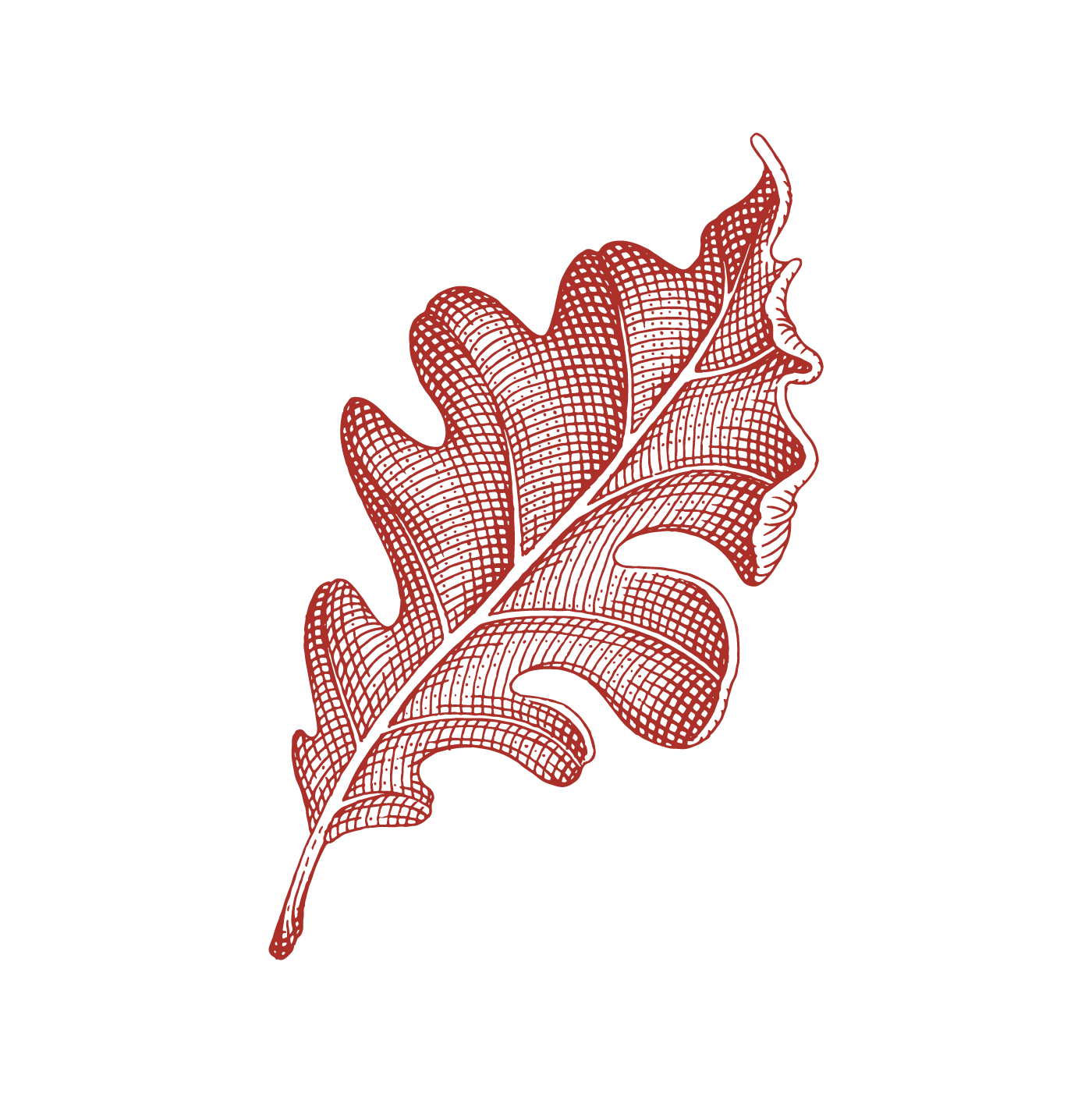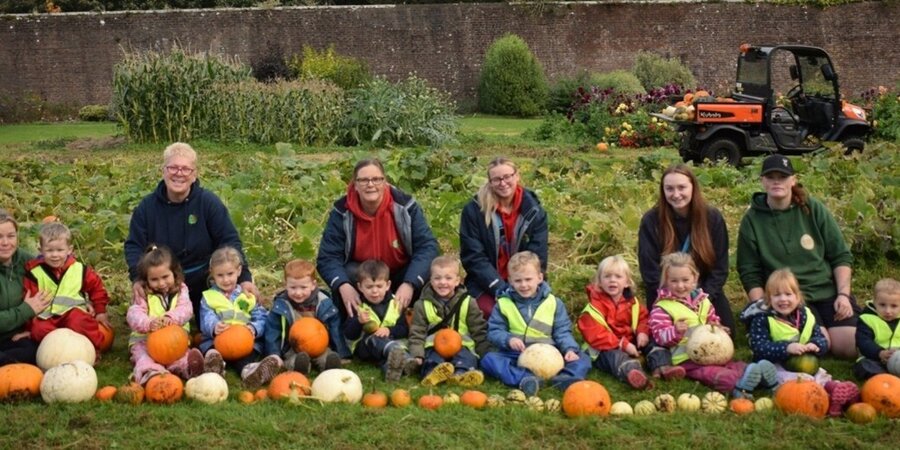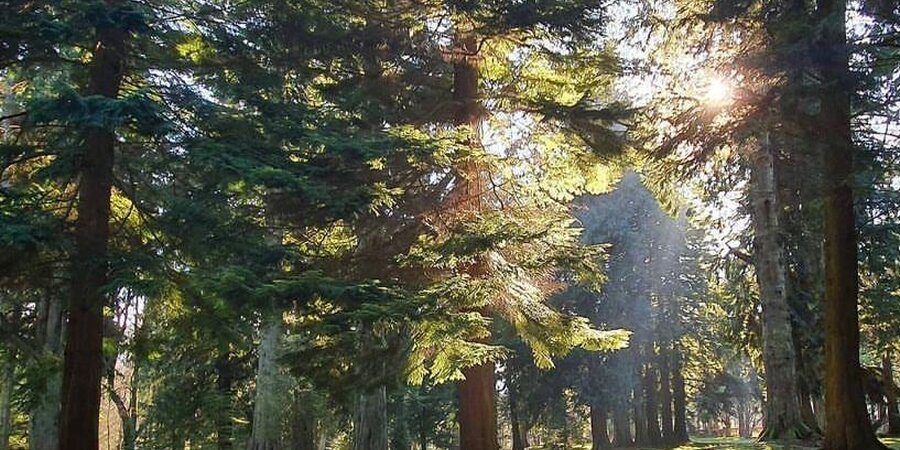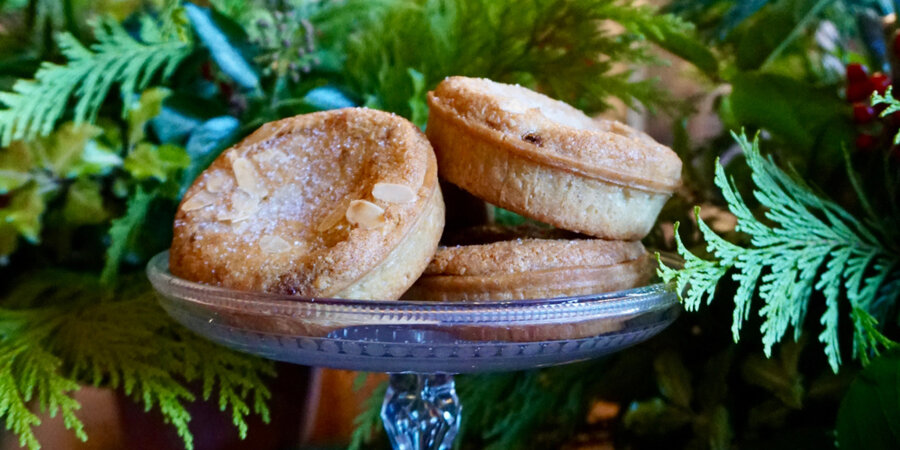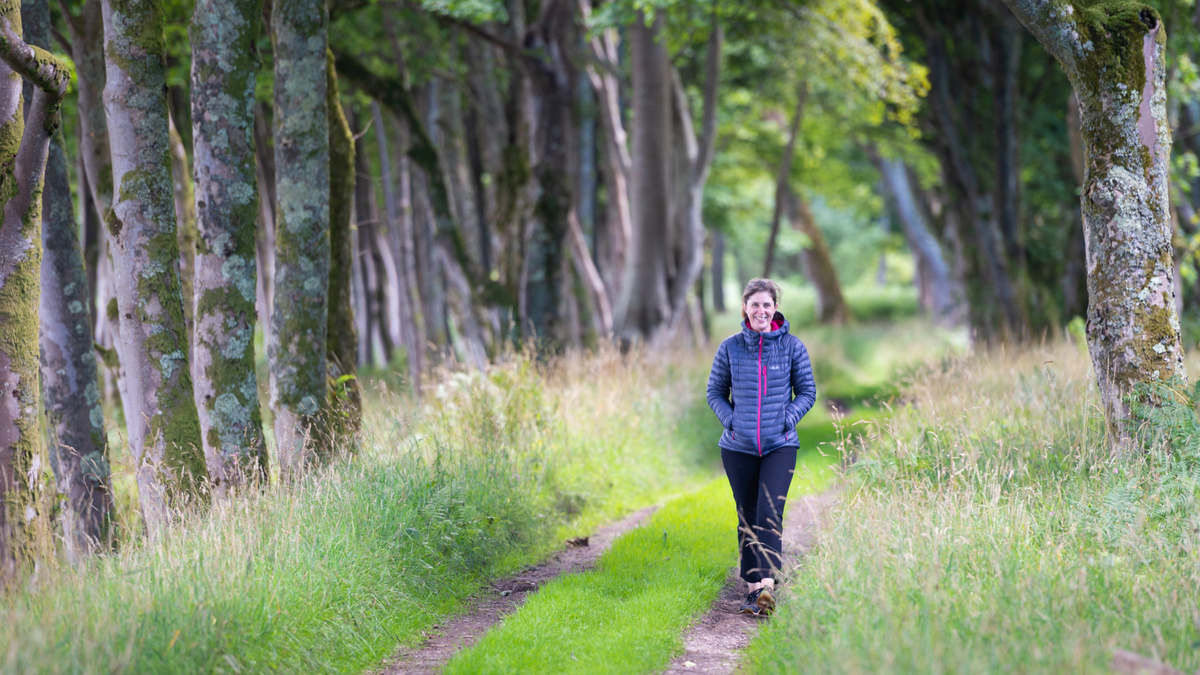
Walks in Mount Stuart
Kitchen Garden to House and Rock Garden
Kitchen Garden
Welcome to the Kitchen Garden!
Five acres in size the Kitchen Garden was laid out in 1820.
In the 1990’s it was redeveloped by noted garden designer Rosemary Verey, OBE VHM, who worked with the then Head Gardener Paul Martin to create a decorative and productive potager or kailyaird – a uniquely Scots term.
Must sees in the Kitchen Garden during the year are the colourful displays in the herb beds and mixed borders.
Glass Pavilion
The Barrett’s octagonal glass pavilion – a leading feature of the 1988 Glasgow Garden festival – was purchased as the garden’s centrepiece and erected on site in 1989. It was intended to house a collection of tender Vireya Rhododendrons from Indonesia and northern Australia but at the time these proved too difficult to source. The internal landscaping was designed and implemented by Mount Stuart’s head gardener his team. The rocks came from the beach below Mount Stuart House and, with some help from a digger and a 3 tonne forklift, the rockwork, paths and pond were all laid out. It The Pavilion now houses a collection of tender plants from around the world, including Musa (banana), Hedychium (ginger) and Strelitzia (bird of paradise) plants.
The Courtyard @ Mount Stuart
Today the Kitchen Garden continues to produce fruit and vegetables for both ornamental display and use in our seasonal Courtyard menu. The team gather herbs to keep dishes tasting fresh and vibrant all year round, from delicate chives in the summer months, to hardy rosemary in the winter. Salads and soups are dictated by the wonderful array of in season vegetables and if you visit The Courtyard in early summer you might be lucky enough to taste our home grown asparagus, but be quick as it’s not around for long!
If you see our chef Campbell out picking produce for our seasonal menu please do stop for a chat, you might even pick up a new recipe idea. (Charlotte please insert link to sample BK menu if available)
Pinetum
The 3rd Marquess’s Pinetum dates back to 1864 and predominantly consists of North American species. This area contains three champion trees, two of which Pinus nigra subsp laricio (Corsican Pine) and Xanthocyparis nootkatensis (Nootka Cypress) are the tallest of their kind in the UK.
Lime Tree Avenue
The avenue was originally planted in 1734 and possibly replanted in 1812. At over 540 metres long it contains more than 160 trees. Originally named Harbour Avenue it was the access road to a small fishing village previously sited at the bottom of the avenue, from where a ferry ran to the Isle of Cumbrae and the town of Largs.
The best times to view Lime Tree Avenue are June and July when the trees are in full bloom, the sweetly scented flowers come alive and the avenue sings with the sound of the pollinating bees.
In the autumn sunlight the Lime trees’ leaves turn a warm gold and fall to light up the floor of the avenue.
The Column
A large stone pillar made from Totternhoe stone, a hard chalk, the monument is topped with a figurine of a lady looking out across the Firth of Clyde to views of Largs and Skelmorlie.
Originally erected at Luton Hoo in Bedfordshire (the home of the 3rd Earl of Bute) the statue is said to have been dedicated to Augusta, Princess Dowager of Wales, to whom the 3rd Earl was devoted. It was erected in its present location by the 3rd Marquess in 1873.
Rock Garden
Welcome to the Rock Garden!
In 1895 the 3rd Marquess commissioned world renowned garden landscaper Thomas Mawson to design a new garden to the west of his newly built home.
Mawson’s stunning design consisted of a series of cascades and calming pools. The Rock Garden’s current plantings are tribute to Jennifer, wife of the 6th Marquess, a keen plant collector, and are mainly of Asiatic origin.
Must sees during the year are the spring and summer displays of Rhododendrons and Magnolias. In autumn the impressive colour ranges of Acers (maples), Enkianthus, Betulas (birches) and Stewartias are eye-catching.
An added bonus is the delicious scent of burnt sugar (candyfloss) which comes from the Cerceridiphyllum japonicum pendulum (weeping Katsura tree).
House to Wee Garden
The South Shubbery
Twice in the last 120 years have plans been drawn up for the development of this area to the south of Mount Stuart house; firstly by the 3rd Marquess in the late 1880’s and secondly by the 6th Marquess in the 1990’s, although sadly both men died before implementing their schemes.
Looking to the three arched windows on the gable end of the house there can be seen a line of red brick through the sandstone. This is where the house was to have been extended. In the archives are several schemes drawn up for the 3rd Marquess, including a large library and several for glass conservatories – some for covered swimming pools, others for large glass corridors leading to a Taj Mahal styled structure.
The 6th Marquess’s design was slightly more modest but would have been highly impressive consisting of a small Gothic style conservatory with a grand staircase leading down to an Italianesque garden with an orangery and statues.
Today the shrubbery is home to a wonderful collection of trees and shrubs from around the world, several of which are champion plants like the Rhododendron decorum and Sorbus sargentiana.
Wee Garden
Welcome to the Wee Garden!
This garden was designed and created by Maria North, wife of the 2nd Marquess, in 1823. Her drawings of the garden are in the archives and show that the layout of the garden remains much the same as it did then, indeed some of the original plants like Quercus suber (Cork oak) still survive today.
The gateway into the Wee Garden is shaped to fit inside the marble over-mantle situated in the house’s Drawing Room. Eileen Bute, wife of the 5th Marquess, wasn’t fond of things Victorian and had the over-mantle removed and placed in the garden however it was returned to its rightful place in the house in the 1980’s.
The Wee Garden is approximately five acres in size and is the most sheltered garden on the grounds, giving home to many tender southern hemisphere plants like Gevuina avellana (Chilean hazel). A must see in August and September when the seed from the previous year ripens, the hazels turn red and eventually black at the same time the current year’s panicles of spidery white flowers are produced.
In April the dinner plate sized pink flowers of the Magnolia campbelli are on display covering the plant from top to bottom. There are several champion trees and shrubs in this area (Olearia, Pittosporum and Persea), look out for our Champion Tree Trail labels to discover more.
House to Shore Walk
Top 10 things to do on our Shore Walk
Spot one of the world’s biggest necklaces!
‘Shadow of a Necklace’ by Kate Whiteford, part of our 2001 Visual Arts programme, is situated on the main lawn. The drawing was cut into the ground and filled with silver sand and in 2003, it was seeded with grass seed. Look out for patches of lush clover which form the outline of the necklace. Find out more about our Visual Arts Programme here.
Enjoy the spectacular views from the lawn to the River Clyde
How many bounces can you do? Why not challenge family and friends to a competition?
Go rock pooling
Late spring to early autumn is the best time to go rock pooling, grab a bucket and net from our Courtyard and discover what’s dwelling in the depths! Look out for shrimps, crabs and sea anemones.
Make sure to wear suitable footwear and be aware of the tides.
Build your very own Mount Stuart House!
Collect a bucket and space from the Courtyard and create your own sand masterpiece. Snap a photo and tag #mountstuart.
Enjoy paddling in the Clyde
Roll up your trousers and enjoy a paddle in the River Clyde. Jump over the waves, who can jump the highest?
Go fossil hunting
Along the shore line are cascading strata of sandstone, this 400 million year old rock started life as tropical bog land near the South Pole in modern day Antarctica – ideal conditions for forming fossils. Don’t forget to share your finds with the team; we’d love to see them.
Spot our resident wildlife
The estate is a haven for wildlife and the shore is no exception. Look out for; seals, oyster catchers, herons, seagulls and porpoises. How many can you spot?
Go beachcombing
From sea glass to shells, driftwood to messages in bottles, there’s a whole world of treasure to discover on our private beach!
For adventurous explorers, take up the challenge to find the 3rd Marquess’s lost ‘whisky’ well
The 3rd Marquess regularly enjoyed a short walk to this well to collect fresh spring water for his whisky. Can you uncover this hidden Bute treasure?
Clue: the well is situated close to Racer’s Burn where it meets Beech Avenue.
